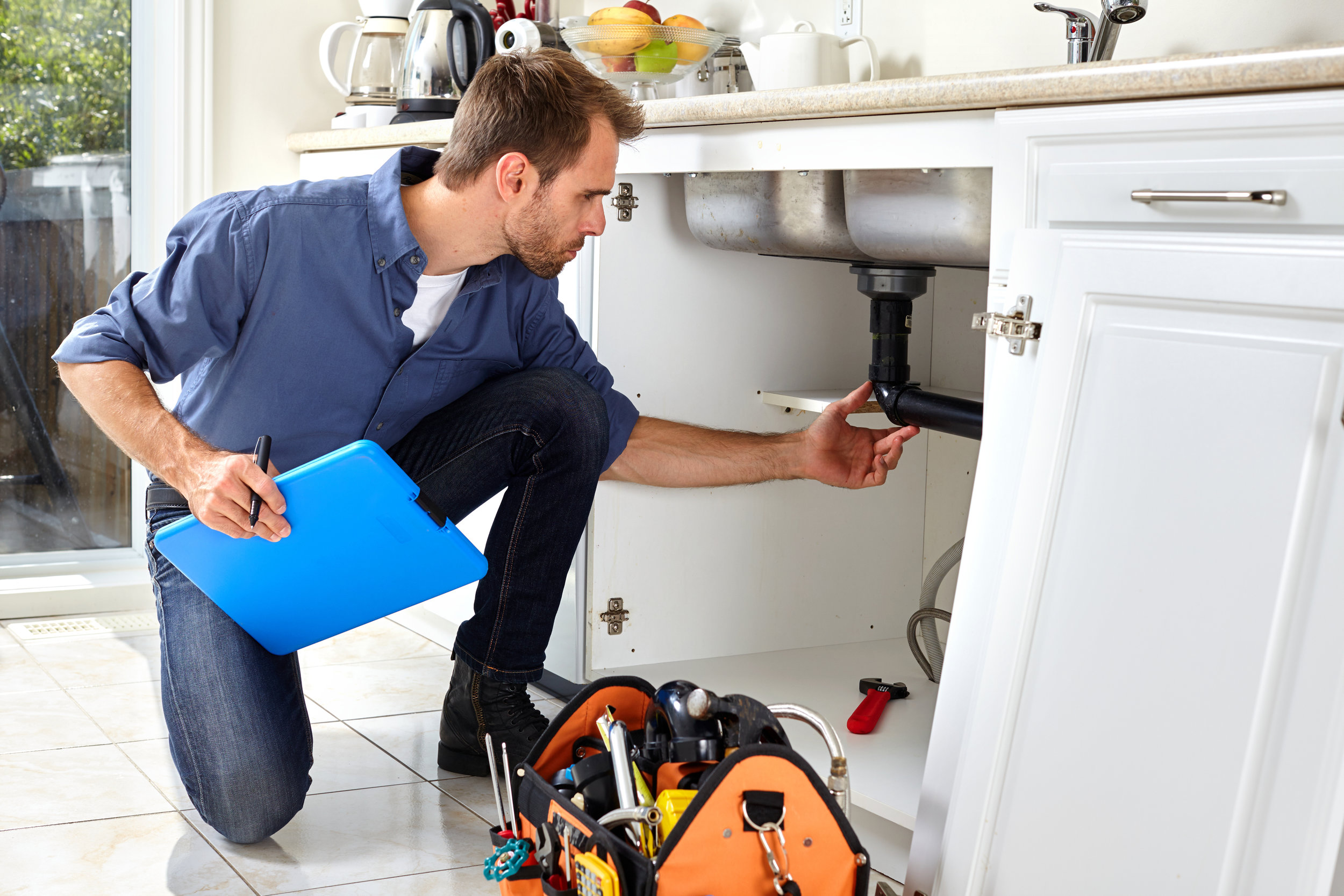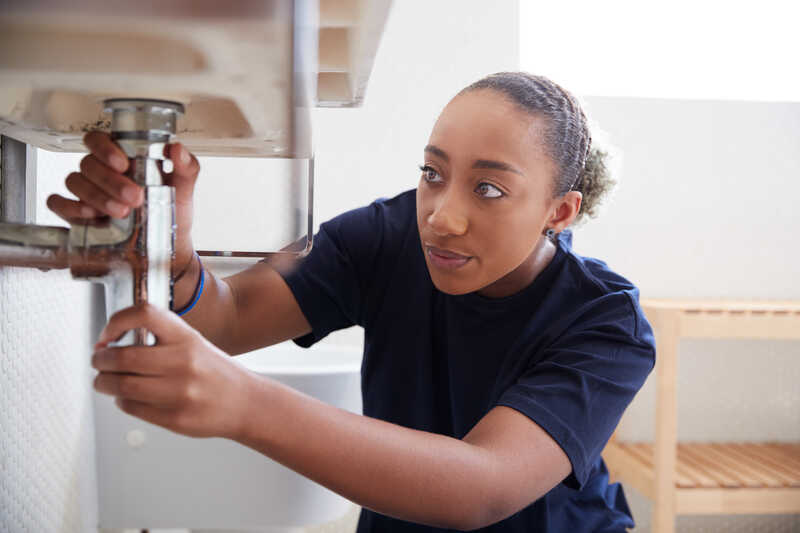A Beginner’s Guide to DIY Plumbing Repairs Without Causing Damage
A Beginner’s Guide to DIY Plumbing Repairs Without Causing Damage
Blog Article
Typical Pipes Problems Every House Owner Ought To Be Aware Of
Home owners frequently come across a series of plumbing issues that can disrupt day-to-day life. Typical problems consist of dripping faucets, clogged up drains pipes, and running commodes. These problems usually originate from damaged parts or particles buildup. Furthermore, low tide pressure and burst pipelines can indicate deeper troubles. Recognizing these difficulties is vital for efficient upkeep. There are various other less noticeable worries that can occur, which warrant closer evaluation.
Dripping Faucets
Leaking faucets can be a discouraging nuisance for homeowners. These relentless drips not just create a bothersome noise yet likewise cause squandered water and boosted energy expenses. A dripping tap frequently arises from damaged washing machines, O-rings, or seals, which wear away over time because of routine usage and exposure to water. In some instances, the tap's internal parts may be rusted or harmed, necessitating an extra comprehensive repair work or replacement. Recognizing the source of the leakage is essential; homeowners might need to disassemble the tap to examine its components carefully. Regular maintenance can assist protect against leaks, consisting of cleaning aerators and inspecting for indicators of wear. Addressing a dripping tap quickly can save water and minimize costs, making it a convenient yet vital task for homeowners to tackle in maintaining their plumbing systems efficiently. Correct focus to this usual concern can lead to an extra comfortable living atmosphere.
Obstructed Drains
Numerous property owners experience the stress of clogged up drains pipes eventually. This common plumbing problem can occur from different reasons, consisting of the accumulation of hair, soap deposit, food fragments, and grease. These materials can develop obstructions that hinder the flow of water, bring about slow drainage or total stoppage.In kitchen areas, oil and food scraps are often the perpetrators, while washrooms frequently deal with hair and soap build-up. Regular upkeep, such as using drain strainers and staying clear of putting fats down the sink, can aid avoid clogs.When a clog does occur, house owners might attempt to use a bettor or a business drain cleaner as first treatments. Consistent issues may require professional support to avoid damages to pipes. Comprehending the reasons and avoidance methods for clogged drains can conserve home owners time and cash, guaranteeing a smoother pipes experience

Running Bathrooms
Running toilets are a typical concern that can stem from different reasons, including malfunctioning flappers and chain problems. The constant running not only wastes water yet also leads to increased energy costs. Addressing these problems without delay can prevent additional problems and bring back effectiveness to the plumbing system.
Reasons of Running Toilets
A consistent circulation of water from a toilet can be both bothersome and wasteful, commonly indicating underlying concerns within the pipes system. One typical reason is a worn flapper valve, which might not develop a correct seal, allowing water to continuously leakage into the dish. Furthermore, a malfunctioning fill shutoff can lead to extreme water circulation, adding to the problem. Misaligned float mechanisms may also cause the bathroom to run as they fail to control the water degree appropriately. One more potential problem is mineral build-up, which can block components and hinder their performance. Determining these causes without delay can help home owners attend to the trouble prior to it rises, making certain efficient operation of their pipes system.
Repercussions of Constant Operating
Although often forgotten, the effects of a continually running bathroom can significantly impact both water usage and family expenses. A running bathroom can squander a standard of 200 gallons of water daily, bring about increased water bills and unnecessary source intake. This extreme water use not just strains the home spending plan but likewise adds to ecological concerns, specifically in areas dealing with water lacks. Furthermore, the consistent audio of running water can be a source of annoyance, interfering with the peace of the home - Drain Services. Long term issues might lead to more considerable pipes problems if left unaddressed, resulting in additional monetary concerns. Homeowners must acknowledge the value of timely fixings to mitigate these adverse impacts and keep an efficient plumbing system
Fixing Running Toilet Issues
Toilets that constantly run can be an aggravating issue for property owners, but determining the reason is the initial action towards an efficient fix. Common reasons include a defective flapper, which may not create a proper seal, permitting water to get away into the dish. Homeowners need to examine the flapper for wear and replace it if needed. In addition, the fill shutoff can be malfunctioning, creating excess water to stream constantly. Replacing this component or readjusting might deal with the problem. Another prospective perpetrator is a misaligned float, which can be gotten used to the proper elevation. Normal upkeep and timely repair services can protect against running bathrooms, making certain both water preservation and cost financial savings on utility expenses.
Low Tide Stress
Reduced water stress can be an aggravating experience for homeowners, frequently showing up as a go weak stream from faucets and showerheads. This issue can originate from numerous reasons, including sediment accumulation in pipes, corroded plumbing, or issues with the community supply of water. Property owners may initially notice reduced water pressure in specific areas of the home, yet it can intensify to a much more extensive trouble if not addressed promptly.In some cases, malfunctioning pressure regulators can additionally be in charge of inadequate water flow. Normal upkeep, such as purging the hot water heater and looking for obstructions, can assist alleviate these concerns. If low water stress continues, it may be essential to get in touch with a specialist plumber to diagnose and solve the underlying reason. Identifying the source of low tide stress is vital for restoring proper water flow and making sure a practical pipes system.
Burst Piping
Ruptured pipes can be a serious pipes issue, frequently arising from the exact same factors that add to low water stress, such as temperature level changes and maturing facilities. When water ices up within pipes, it expands, increasing pressure until the pipeline can no longer have it, causing a rupture. Furthermore, corrosion from extended direct exposure to water can weaken pipelines, making them prone to rupturing under typical pressure.Homeowners may notice indications of a ruptured pipe through abrupt water leakages, damp areas on ceilings or wall surfaces, and an unanticipated rise in their water costs. Immediate activity is essential; failing to attend to a ruptured pipe can cause extensive water damages, mold and mildew development, and pricey fixings. Regular inspections and upkeep of plumbing systems can aid prevent this issue. Protecting pipelines in chillier areas and changing old piping can considerably minimize the danger of ruptured pipes, guarding the home's pipes honesty.
Hot Water Heater Issues
Just how can house owners identify hot water heater problems before they rise? Normal examination and upkeep can assist spot potential troubles early. Homeowners ought to search for signs such as irregular water temperature, uncommon noises, or a decline in hot water supply. Leaks or pools around the system may indicate a malfunction that requires immediate interest. The appearance of corrosion or sediment build-up can additionally indicate the demand for maintenance.Additionally, homeowners ought helpful resources to monitor the age of their hot water heater; most units have a life-span of 8 to 12 years. It might be time to show on substitute if the heating system is approaching this age and revealing indicators of wear. Regular flushing of the storage tank can avoid debris accumulation, lengthening the system's life. By continuing to be alert and dealing with concerns immediately, home owners can avoid pricey repair services and guarantee their water heating unit runs efficiently for many years ahead.
Sewer Line Issues
Many home owners may come across sewer line issues eventually, impacting their pipes system's overall functionality. Typical problems consist of obstructions, tree origin invasions, and pipeline damage. Obstructions frequently result from the buildup of grease, hair, and international items that block the flow of wastewater. Tree origins can infiltrate sewer lines, creating cracks and leakages. In addition, aging pipes might break or rust, causing more complications (Plumber). Signs of sewer line trouble consist of sluggish drains, unpleasant odors, and sewer backups, which can pose wellness dangers. Property owners should deal with these troubles without delay to stay clear of considerable damage and pricey repairs. Regular maintenance, such as scheduled assessments and cleaning, next page can assist protect against significant problems. In serious situations, specialist treatment may be required to fix or change broken areas of the sewer line. Knowing these potential problems can help homeowners take proactive procedures to preserve their pipes systems successfully
Regularly Asked Questions
Just How Can I Protect Against Plumbing Issues in My Home?
To stop pipes troubles, routine maintenance is important. House owners should check pipes for leaks, tidy drains pipes, and display water pressure. In addition, informing themselves concerning correct use can considerably minimize the threat of future plumbing problems.
When Should I Call a Plumbing Rather of Fixing It Myself?
When to call a plumbing usually depends on the seriousness of the concern, establishing. Considerable leaks, consistent obstructions, or unfamiliar problems warrant specialist help, making sure security and stopping additional damage instead of taking the chance of individual efforts at repair.
What Are the Signs of Hidden Plumbing Leaks?
Signs of concealed pipes leakages consist of inexplicable water expenses, moist spots on ceilings or walls, mold and mildew development, and a moldy odor. These signs usually suggest underlying problems that call for professional evaluation and repair service for resolution.
Just how Frequently Should I Have My Pipes Examined?
Normal plumbing examinations are advised each to 2 years. This regularity aids determine possible issues early, ensuring the system stays effective and reducing the risk of pricey repair services or unexpected emergencies in the future.
Are There DIY Solutions for Minor Plumbing Issues?

Report this page